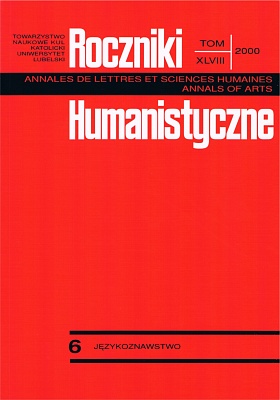Polish Verbs. A Division into Conjugations and Groups
Abstract
The basis for the division of Polish verbs is the morphological structure of the personal forms of the Present Tense and the differences between the structure of those forms and the structure of the infinitive.
With respect to the ending of the first and second persons singular in the Present Tense (as well as in the Future Perfect) verbs are traditionally divided into four conjugations: the first one -ę, -esz, the second -ę, -isz (-ysz), the third -am, -asz, and the fourth -em, -esz. With respect to the form of the infinitive the first conjugation verbs are divided into 15 groups and the second conjugation verbs into 3 ones; the third and fourth conjugation verbs are not divided into smaller groups. The list of the above four conjugations verbs is supplemented by the irregular verbs: być (be), jeść (eat), wiedzieć (know), powiedzieć (say), mieć (have), chcieć (want), iść (walk) and jechać (go).
The suggested division of verbs differs from the traditional divisions, among others the one in Słownik języka polskiego (Dictionary of the Polish Language) compiled by W. Doroszewski (Warsaw 1958-1969) and Słownik języka polskiego (Dictionary of the Polish Language) compiled by M. Szymczak (Warsaw 1978), based mainly on J. Tokarski's proposition (Czasowniki polskie [Polish Verbs], Warsaw 1951)
Copyright (c) 2000 Roczniki Humanistyczne

This work is licensed under a Creative Commons Attribution-NonCommercial-NoDerivatives 4.0 International License.





